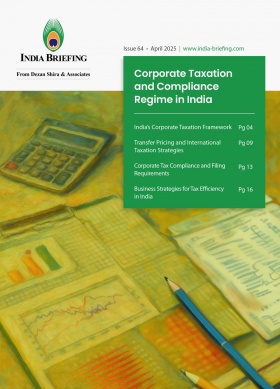Trump Announces 25% US Tariff on “Friend” India
US President Donald J. Trump has said that India will face a steep 25 percent tariff, along with an additional, unspecified levy from the United States (US). Despite several rounds of intense negotiations between the two countries, the latest decision comes as a bitter response to India’s global trade practices.
The tariff is scheduled to take effect on August 7, 2025, effectively closing the window for any delay in the imposition of the new customs rate.
President Donald Trump has announced that India will be subject to a 25 percent tariff on its exports to the US, along with an additional, yet unspecified, penalty.
This decision was made as a response to the stalled progress in finalizing a US-India trade agreement, in addition to India’s bilateral ties with other global economies.
Trump justifies 25 percent tariffs on India
In a statement published on July 30, 2025, on his social media platform Truth Social, Trump acknowledged India as a “friend” of the US but criticized its trade practices. He argued that the US has conducted relatively little business with India over the years due to what he described as excessively high tariffs—among the highest in the world—and restrictive non-monetary trade barriers imposed by India.
Trump emphasized that, as a consequence of India’s trade policies and its major purchases from Russia, the country will face both the new tariff and an additional penalty starting August 7, 2025. However, he did not specify the amount or nature of the additional penalty.
This move comes shortly after Trump expressed doubts that a comprehensive trade deal with India would be finalized before the August 1 deadline. According to media reports, US officials have confirmed that the tariffs and penalties will take effect as scheduled, with no further extensions. While negotiations between the two countries are ongoing, with the next round set for late August, they are unlikely to prevent the imposition of the new tariffs.
Recently, the US has negotiated trade agreements with the European Union (EU), Vietnam, and Indonesia, while progress with India has been limited. The newly announced tariffs mark a hardening of the US stance in trade relations with partner countries that have not swiftly concluded reciprocal trade agreements.
India responds to Trump’s latest tariff move
Shortly after Trump announced new tariffs on Indian exports, the central government issued an official statement acknowledging his remarks on bilateral trade. It confirmed that it is actively assessing the implications of this development.
The central government stated that it has been engaged in ongoing discussions with the US to finalize a trade agreement that is fair, balanced, and mutually beneficial. It reaffirmed its strong commitment to reaching such an agreement while protecting the interests of Indian farmers, entrepreneurs, and micro, small, and medium enterprises (MSMEs), which remains a top priority.
The note states that India will take all necessary steps to safeguard and promote the country’s economic interests, as was done with the latest Free Trade Agreement (FTA) finalized with the United Kingdom (UK).
Timeline of US tariff actions and India’s trade negotiations
On April 2, 2025, Trump announced the implementation of reciprocal and baseline tariffs, tailored on a country-specific basis. India was initially subjected to a 26 percent tariff. However, on April 9, the US administration temporarily suspended the measure for 90 days to provide countries an opportunity to negotiate more favorable trade terms with the United States.
During this window, India engaged in multiple rounds of discussions with US officials. Despite these efforts, the two sides were reportedly unable to reach a consensus on key issues—particularly in the agriculture and dairy sectors.
In July, Trump extended the tariff suspension once again, delaying its enforcement until August 1, 2025. Over the past week, the US finalized trade agreements with several major economies, including the European Union, Vietnam, and Indonesia. As of July 30, 2025, however, India has been subjected to the highest tariff rates imposed by the US.
|
US Reciprocal Tariff Rates on Countries as of July 30, 2025 |
||
|
Country/region |
Reciprocal tariff rate as of July 30 |
Initial tariff announced on April 2 |
|
India |
25% |
26% |
|
EU |
15% |
50% |
|
China |
10% |
34% |
|
Indonesia |
19% |
32% |
|
Japan |
15% |
25% |
|
Vietnam |
20% |
46% |
Source: Trump Tariff Tracker 2.0
India-US trade relations over the years
India and the US have developed a significant economic partnership, characterized by consistent growth in bilateral trade and increasing engagement across multiple sectors. Contrary to Trump’s claims, trade between the two countries has expanded substantially in recent years, making the US India’s largest export market and a key overall trade partner.
|
India-US Import-Export Activities (Value in US$ Million) |
||||||
|
|
2020-21 |
2021-22 |
2022-23 |
2023-24 |
2024-25 |
2025-25* |
|
India’s exports to the US |
51,633 |
76,176 |
78,548 |
77,523 |
86,511 |
17,253 |
|
India’s imports from the US |
28,888 |
43,314 |
50,864 |
42,195 |
45,334 |
8,870 |
|
Total |
80,521 |
119,490 |
129,412 |
119,718 |
131,845 |
26,123 |
Source: Department of Commerce, Ministry of Commerce and Industry, GoI.
*Import-export data for FY 2025–26 is provisional and subject to periodic updates throughout the remainder of the financial year.
The long-term import–export trend between India and the US has been upward, underscoring the strategic and economic importance both countries place on their bilateral ties.
As of 2024, India ranks among the US’s top 12 import sources, holding the 10th position in terms of import value.
|
US’s Top Importing Countries |
|||
|
Rank |
Countries/regions |
Value imported in 2024 (US$ thousand) |
Trade balance 2024 (US$ thousand) |
|
1 |
Mexico |
509,986,324 |
-175,944,965 |
|
2 |
China |
462,638,752 |
-319,093,012 |
|
3 |
Canada |
422,170,029 |
-73,666,613 |
|
4 |
Germany |
163,546,205 |
-87,933,302 |
|
5 |
Japan |
152,066,016 |
-72,325,170 |
|
6 |
Vietnam |
142,475,987 |
-129,377,832 |
|
7 |
South Korea |
135,461,351 |
-69,919,561 |
|
8 |
Taiwan |
118,730,455 |
-76,393,594 |
|
9 |
Ireland |
103,755,092 |
-87,217,061 |
|
10 |
India |
91,234,523 |
-49,481,855 |
|
11 |
Italy |
78,446,453 |
-45,963,443 |
|
12 |
UK |
69,269,461 |
10,671,882 |
Source: ITC Trade Map
At present, the US runs a significant trade deficit with India; however, the rising trade volumes reflect mutual commercial interest and expanding supply chains.
ALSO READ: US Tariff Shifts Give India Trade Edge Over Global Competitors
Key takeaway
The imposition of a 25 percent tariff, along with an additional yet unspecified penalty on Indian exports to the US, marks a significant escalation in bilateral trade tensions. While the US administration has justified the move as a response to stalled negotiations and India’s trade policies, it stands in stark contrast to the reality of deepening economic ties between the two countries.
If implemented as scheduled on August 1, 2025, the new tariffs risk disrupting a relationship that has been strategically and economically beneficial for both India and the US.
About Us
India Briefing is one of five regional publications under the Asia Briefing brand. It is supported by Dezan Shira & Associates, a pan-Asia, multi-disciplinary professional services firm that assists foreign investors throughout Asia, including through offices in Delhi, Mumbai, and Bengaluru in India. Dezan Shira & Associates also maintains offices or has alliance partners assisting foreign investors in China, Hong Kong SAR, Vietnam, Indonesia, Singapore, Malaysia, Mongolia, Dubai (UAE), Japan, South Korea, Nepal, The Philippines, Sri Lanka, Thailand, Italy, Germany, Bangladesh, Australia, United States, and United Kingdom and Ireland.
For a complimentary subscription to India Briefing’s content products, please click here. For support with establishing a business in India or for assistance in analyzing and entering markets, please contact the firm at india@dezshira.com or visit our website at www.dezshira.com.
- Previous Article India Becomes Leading Source of Smartphone Shipments to the US in Q2 2025
- Next Article India Backs 23 Chip Design Projects to Boost Semiconductor Supply Chain







